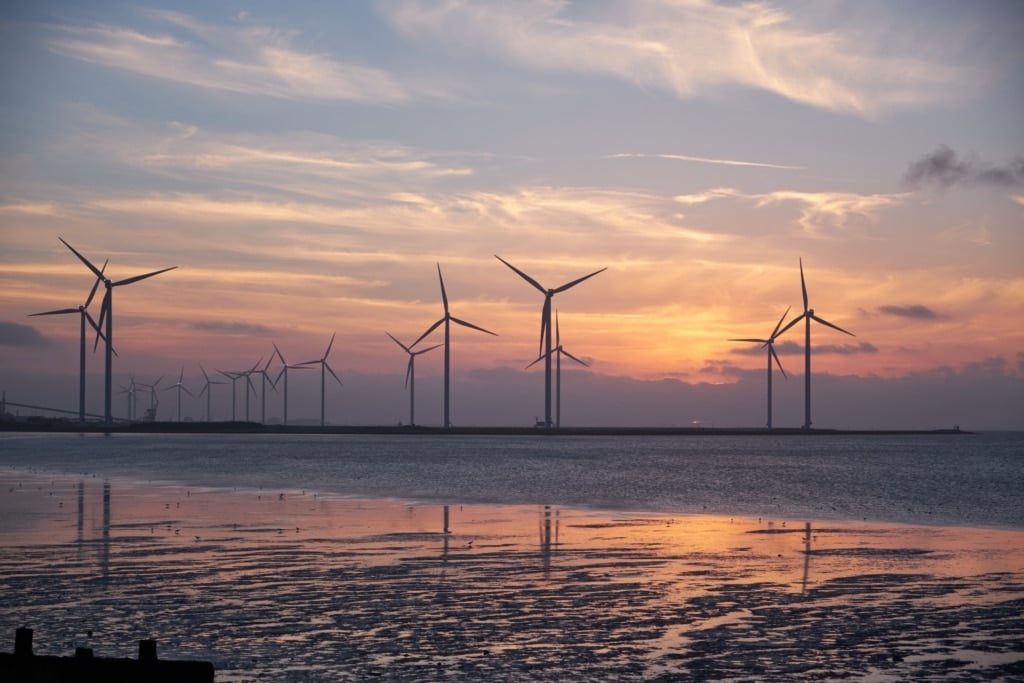Wind power has been a long-standing poster child for the future of a cleaner energy grid. A 2017 NREL study showed that deploying 30% wind and 5% solar as the primary energy sources on the grid can reduce fuel costs and carbon emissions significantly – by an estimated 40% and 25-45% respectively. This would be the rough equivalent of 22-36 million cars being taken off the road.
The wind sector continues to grow and shape the future of the grid and the US’s energy independence. US wind power has more than tripled over the past decade and is the largest source of renewable energy in the country at nearly 110 gigawatts (GW). As wind power on the grid increases, it’s crucial to keep in mind the supply chains that feed into renewable energy sources. While wind is a spectacular resource, there is significant technology and other natural resources that go into creating the turbines, motors and blades that enable us to capture, store, and distribute that energy.
COST & STORAGE
As is always the case, cost and storage are major factors in discussing renewable energy. Wind energy prices continue to fall year after year as the efficiency of turbines increases, and wind is now the cheapest source of new-build energy generation. In terms of storage, wind faces very similar challenges to those discussed in our last post on solar energy. Since wind production is naturally intermittent, storage is the only foreseeable way that renewables can meet 100% of the energy demand on the grid without any assistance from fossil fuels. Fortunately, new-build battery storage is already cheaper than traditional peaking plants. As these plants are being retired, implementing battery storage peaking facilities in their place will vastly improve the capabilities of a renewables-first grid.
CRITICAL MATERIALS
On the tails of Lockheed Martin winning a contract to upgrade missile batteries for Taiwan this summer, China threatened to cut off the US defense contractor from their supply of rare earth elements (REE) and reminded the world that they are in control of a large portion of global REE deposits. Even with China supplying other countries freely, competition for these elements can be stiff as new and sustained growth in REE supply is increasingly difficult to achieve.
REEs such as Neodymium (Nd), Praseodymium (Pr), Dysprosium (Dy) and Terbium (Tb) are integral to creating permanent magnets in turbines that make up almost ¼ of the US wind market. Due to the unique nature of these elements, there have been no promising substitutions for REEs in typical NdFeB permanent magnets. Current research does however indicate that the material efficiency of Nd and Pr necessary for permanent magnets is improving, meaning that the quantities necessary to produce the magnets may fall.
In addition to wind power REEs are crucial to defense technologies, hybrid and electric vehicles, consumer technology, and more. In such a high-demand situation, it is imperative that we investigate and pursue potential alternatives. WSU Everett’s Dr. Gordon Taub leads a significant effort to explore these options. After winning a 2019 JCDREAM seed grant, Taub’s Wind Energy Team at WSU Everett & Everett Community College has begun researching alternative turbine designs with the goal of improving efficiency and REE reduction. They are also conducting a review of state-of-the-art research into the wind market to show how much rare earth consumption is really taking place.
Based on Dr. Taub’s review the offshore wind market is currently dominated by a Siemens turbine that is free of rare earths, but market forces such as the drive for larger and more offshore wind turbines are likely to drive the industry to use more REE-dependent generators in the near future.
High-REE turbines account for about 23% of US wind capacity, weighing in at a hefty 216kg of REE per MW of output. Though lower- or no-REE turbines power the majority of the wind energy industry, low-REE turbines still use anywhere from 80kg-160kg of rare earth material per megawatt of output depending on the speed of the turbine’s transmission. All in all, wind applications consume an estimated 2600 metric tons of rare earth material annually.
It’s encouraging that wind industry manufacturers and materials scientists have already begun considering and implementing sustainable alternatives to the turbines that rely heavily on REEs. If manufacturers can continually resist market pressures to deploy high-REE machinery as demand rises, the industry can help to alleviate strain on the rare earth supply chain and secure more sustainable growth.

